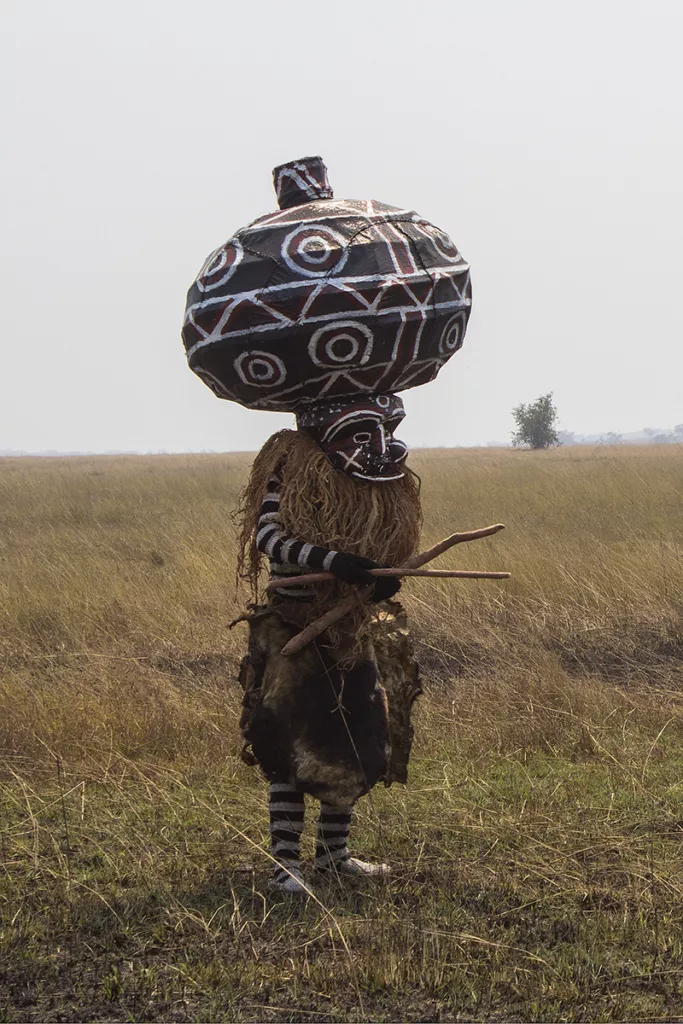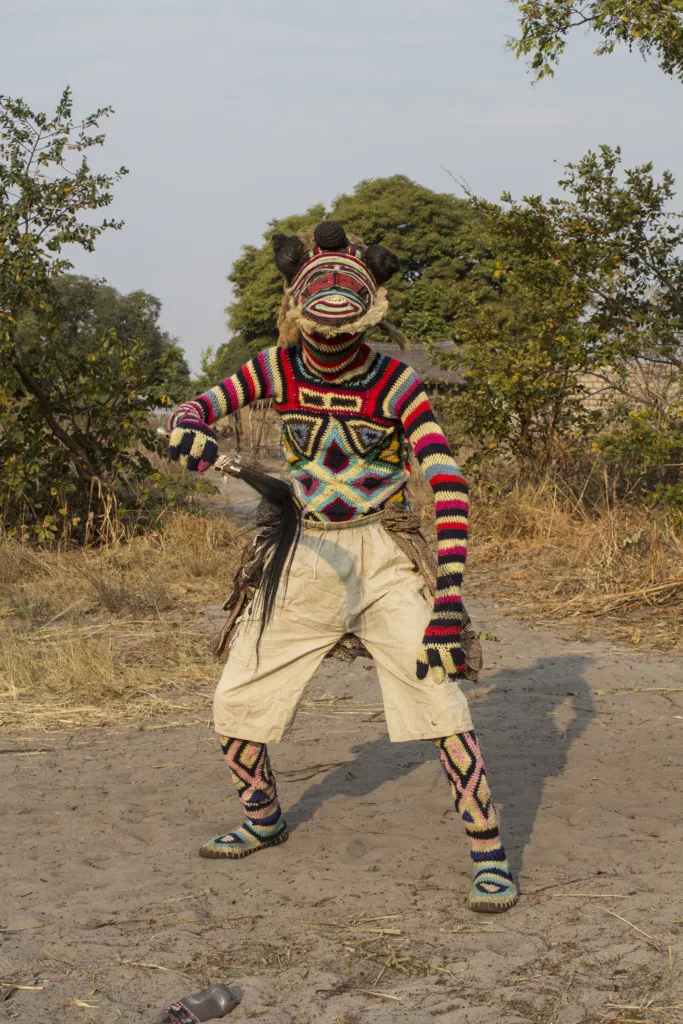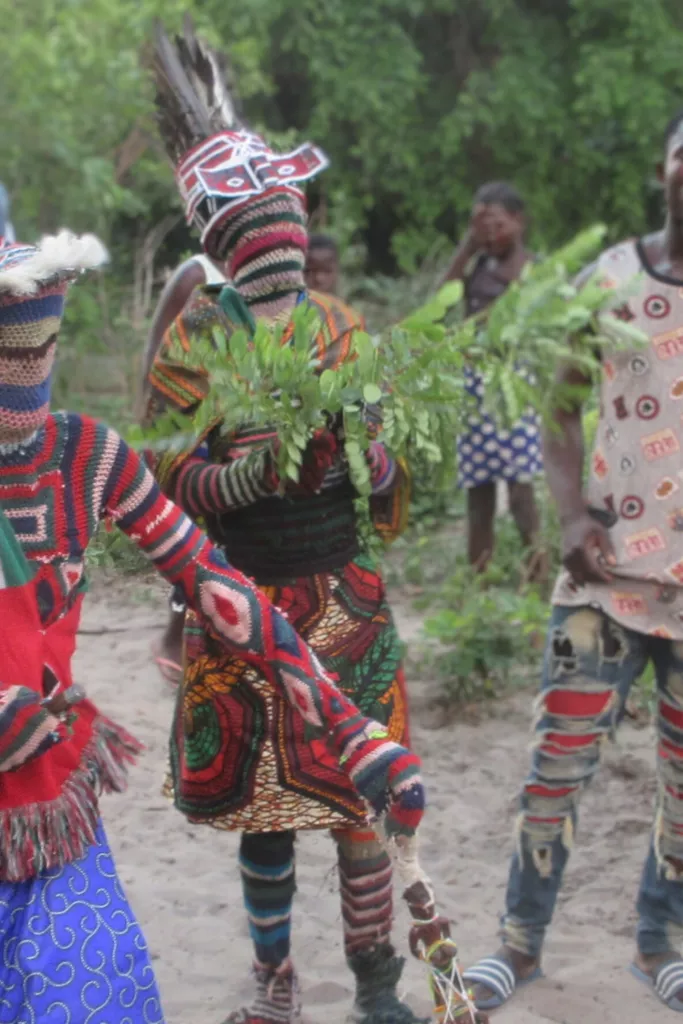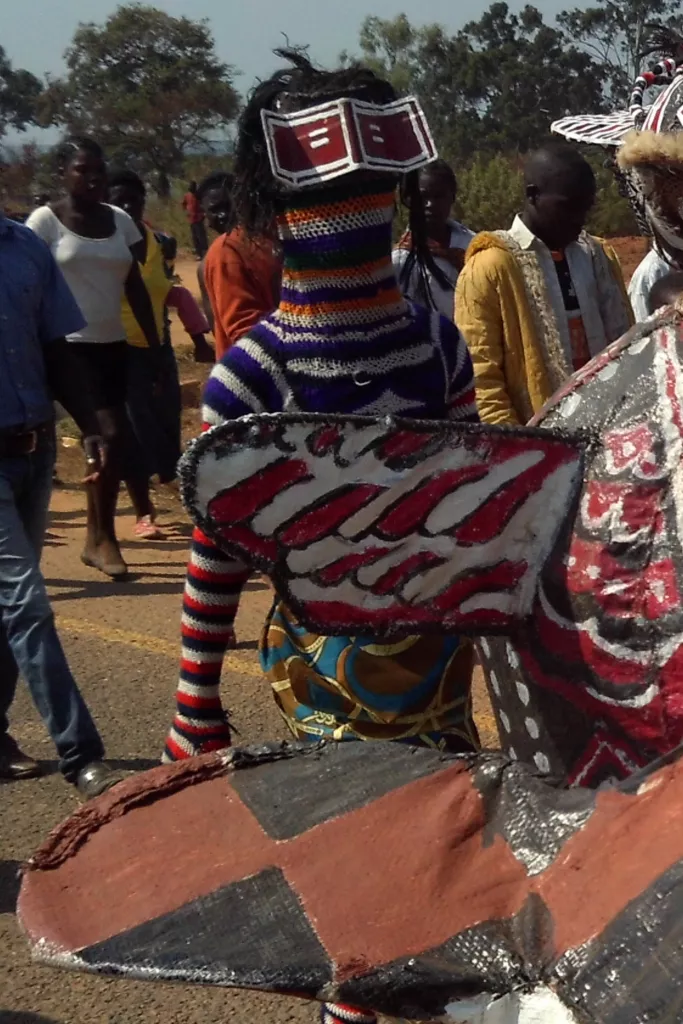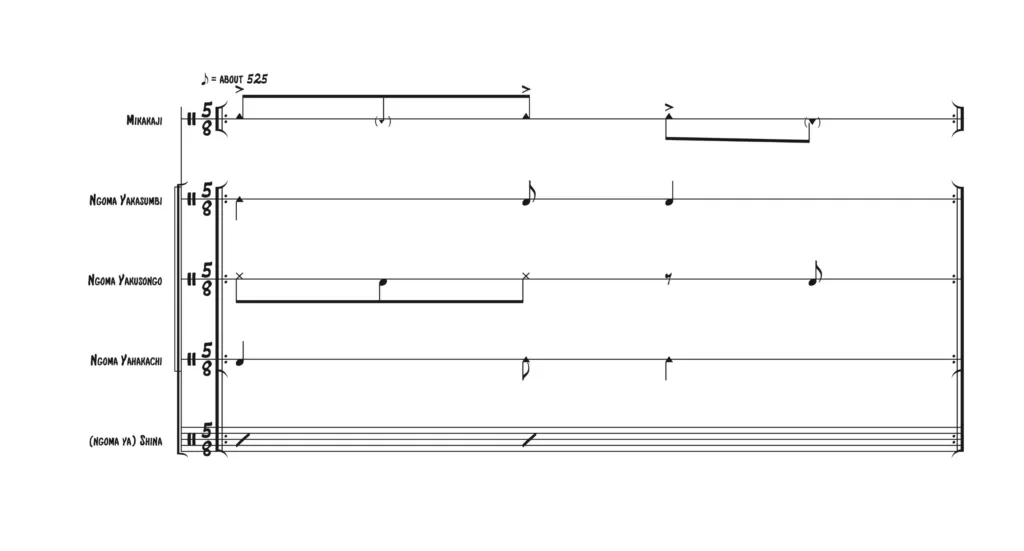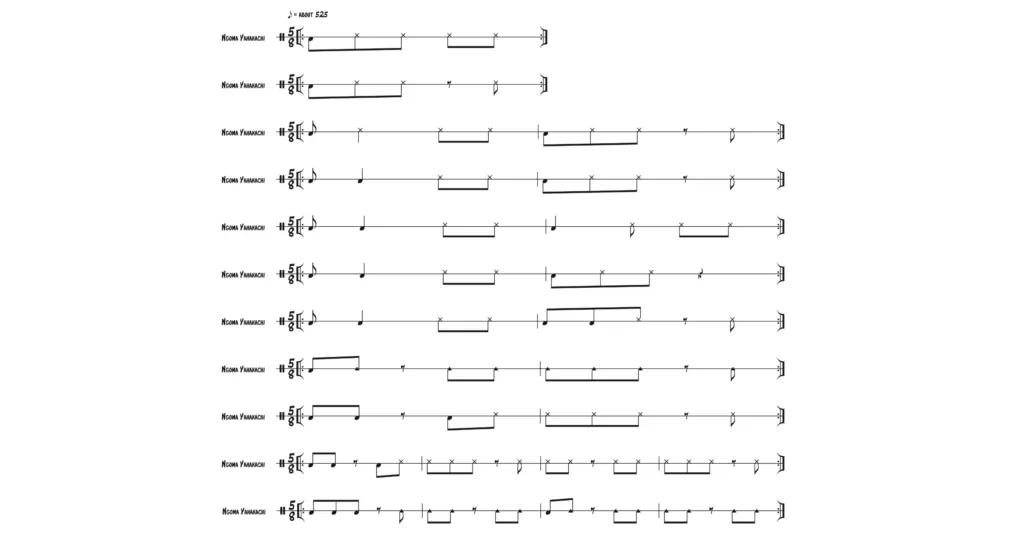Mungongi
Alternate Spelling: Mungonge
Alternate Name: Kuthopoka
for higher quality audio, check upcoming ILAM PROJECT; for higher quality video, download from “Videos of Luvale (and Related) Sonic Culture” link
Origin: Luchazi
In deep Luchazi culture, graduates of the preliminary mukanda male initiation school may further their traditional education through enrollment in the grueling (and now rare) mungongi. While the music of the same name is thought to have originated there, communities of this cultural zone now perform Mungongi in various other settings. It is the primary dance for rare, fierce makishi such as Mbongo who would often perform in occasions related to the mungongi school. More commonly, Chizaluke moves to Mungongi before his primary dance of Fwifwi. For Chizaluke, Mungongi acts as his entry music into the chilende (large dancing event). While musicians and spectators provide accompaniment, Chizaluke dances atop the shoulders of men. They emerge from one arc of the chilende circle and the dance concludes as soon as they arrive at the drums. Mungongi similarly acts as entry music for both male and female initiates (Tsukada 1997, 357) as they return to the village after months of seclusion.1 They are escorted to Mungongi before performing their main dances: Chiyanda and Machakili (for girl initiates) and Kuhunga and Kawali (for boy initiates). Finally, Mungongi is a royal dance of conquest that honors chiefs during important festivals such as the Likumbi Lya Mize of the Luvale or Chivweka of the Luchazi. When performed as such in the presence of a chief, it goes by a different name: Kuthopoka. The Kuthopoka is danced by a specially selected performer (the chitapanga) wielding the poko ya Kayombo ka Kutemba (the sword of Kayombo, son of Kutemba) – a famous weapon of Luvale conquest. Since Chizaluke is a chief’s ancestor, his dancing of Mungongi may link him to his living royal counterparts. Monster makishi (such as Chikishikishi and Mbongo) may dance Mungongi to convey the fierceness attached to chiefs or the daunting nature of mungongi initiation.
Whether Chizaluke is moving atop shoulders or a chitapanga is honoring a chief with a graceful sword, the Mungongi dance usually involves a specific arm motion. The starting position places relaxed arms in front of the dancer, with the left palm up and right down. Any prop (such as a sword, ax, or twig) is in the right hand. The dancer then rotates palms as each hand sweeps clockwise. If the dancer has free legs, they will simultaneously execute three steps: two quick, one long.
Rhythmically, Mungongi is quite unique within this repertoire as it is the only genre to use this timeline and meter.2 Many non-professional musicians often struggle to execute the drum patterns of Mungongi, further contributing to its intended connotations of difficulty.
Instrumentation
- Lead drum: ngoma ya shina
- Supporting drums: ngoma yahakachi, ngoma yakusongo, ngoma yakasumbi
- Timeline: mikakaji
Mungongi Interactive Mixer
Recorded by Chota in Kabwata Village, Lusaka, Zambia on October 28, 2021.
works best in Chrome & Firefox; allow each track to start loading before playing, refresh if necessary
| mikakaji | performed by David Chinyama | |
| ngoma yakasumbi | performed by William Vunda | |
| ngoma yakusongo | performed by Martin Kasweka | |
| ngoma yahakachi | performed by Kakenge Kandeleyi | |
| shina | performed by Chinyama Kelvin Tokha |
Alternate Supporting Drum Parts
- Tsukada, Kenichi. 1997. “Drumming, Onomatopoeia and Sound Symbolism among the Luvale of Zambia.” In Cultures Sonores d’Afrique, 349–91. Tokyo: Institute for the Study of Languages & Cultures of Asia & Africa, Tokyo University of Foreign Studies. ↩︎
- I interrogate the complexities of analyzing Mungongi’s meter in an upcoming publication ↩︎

